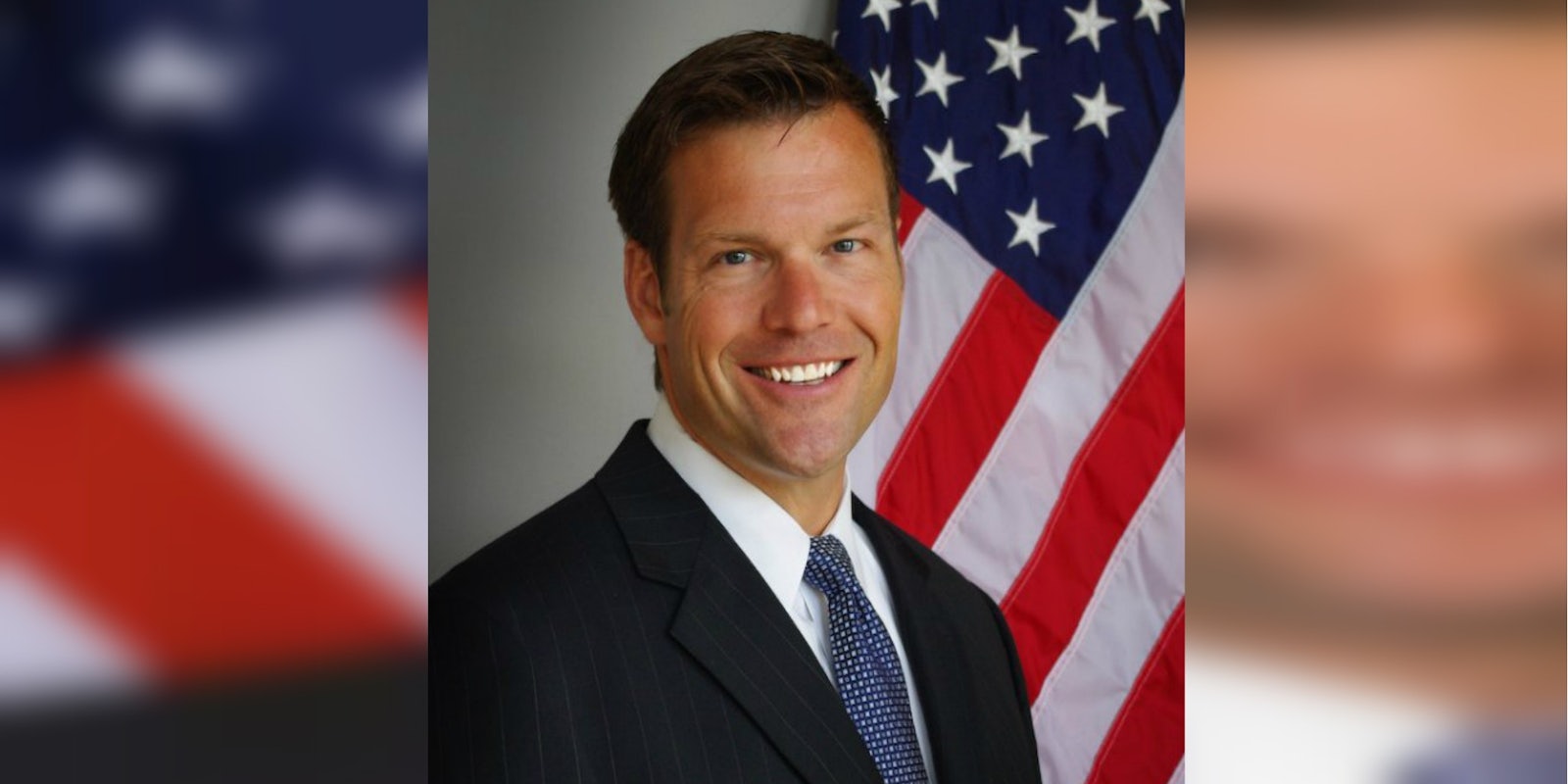Kansas Secretary of State Kris Kobach learned an important lesson about security on Monday: The internet misses nothing.
Kobach, a potential candidate for Homeland Security secretary in President-elect Donald Trump‘s administration, met with Trump privately in Bedminster, New Jersey, on Sunday. An Associated Press photographer, Carolyn Kaster, captured the pair outside the Trump National Golf Club Bedminster. What Kobach apparently failed to realize was that he had exposed his private plan for Trump’s touted “Muslim registry” and other DHS efforts for the world to see.
Kris Kobach should learn to use folders and cover sheets. pic.twitter.com/q3sqB59wtA
— southpaw (@nycsouthpaw) November 21, 2016
Looks like there’s reference to a potential change in voter rights at the bottom here too. pic.twitter.com/Qj8iuqhcWy
— Gideon Resnick (@GideonResnick) November 21, 2016
Zooming in on the photo reveals two items at the top of his agenda:
1. Update and reintroduce the NSEERS screening and tracking system (National Security Entry-Exit Registration System) that was in place from 2002-2005. All aliens from high-risk areas are tracked.
2. Add extreme vetting questions for high-risk aliens: question them regarding support for Sharia law, jihad, equality of men and women, the United States Constitution.
In a statement to the Topeka Capital-Journal, which first reported on the photo revelation, Kansas Senate Minority Leader Anthony Hensley, a Democrat, pointed out Kobach’s failure to conceal the document while discussing national security issues with Trump as highly ironic.
“That’s the height of irony if he’s wanting a job in Homeland Security and you’re able to see in a photograph what should be confidential information,” he said.
The National Security Entry-Exit Registration System (NSEERS), enacted under former President George W. Bush in the wake of the 9/11 terrorist attacks, required males over the age of 16 and living or traveling in the U.S. on non-citizen visas from 25 countries to pass additional security screenings, submit to fingerprints and photographs, and check in with immigration officials for intensive questioning 30 days after entering the U.S. and every year they remained in America, among other requirements.
While NSEERS did not specify Muslims as the program’s targeted group, all of the countries on the NSEERS list, save North Korea, were Muslim-majority countries.
“After 9/11, the U.S. government has increasingly used immigration enforcement as a proxy to target Muslim, Arab and South Asian communities,” Margaret Huang, executive director of the Rights Working Group, said in a statement last year, after Trump’s Muslim registry plan first made headlines. “The conflation of immigration law with ‘national security’ concerns has resulted in immigration enforcement programs that foster illegal racial profiling for immigrant communities across the board.”
NSEERS ultimately led to zero terrorism charges, but it did result in the deportation of nearly 14,000 men, most for visa violations, out of some 100,000 registered. President Barack Obama dismantled the program after taking office. However, the program is still in existence; all of the countries on the list have simply been removed, rendering NSEERS inoperable.
Chris Rickerd, policy counsel at the American Civil Liberties Union, told the Daily Dot last December that an incoming administration could reactivate NSEERS with little red tape.


